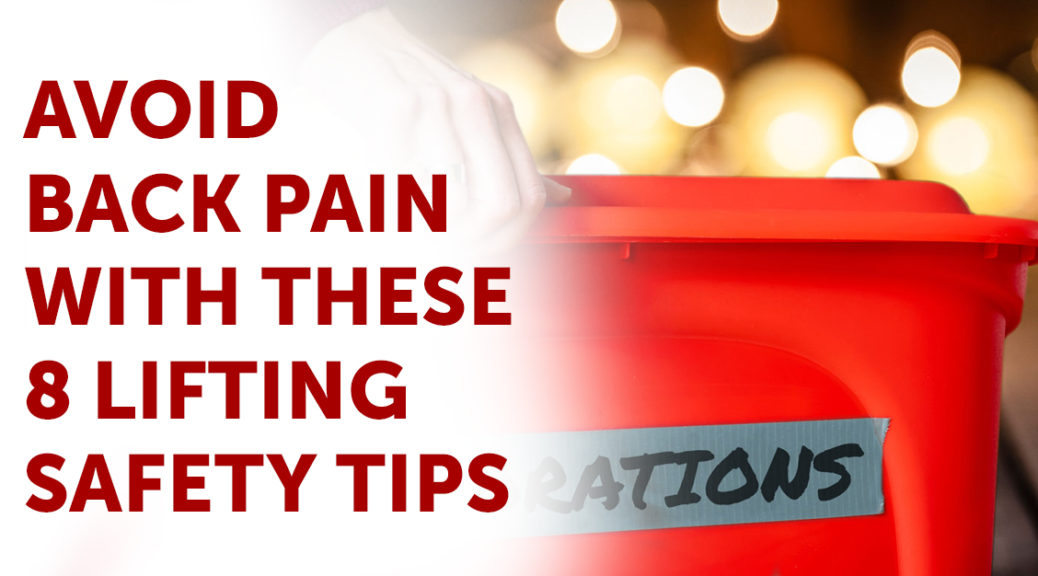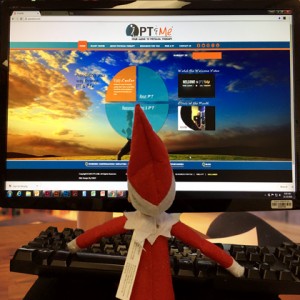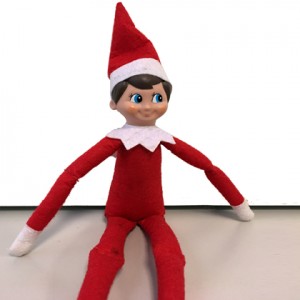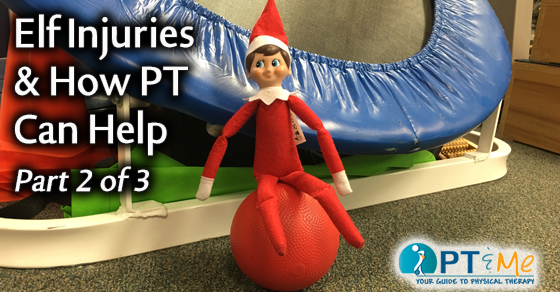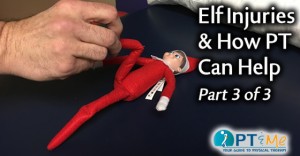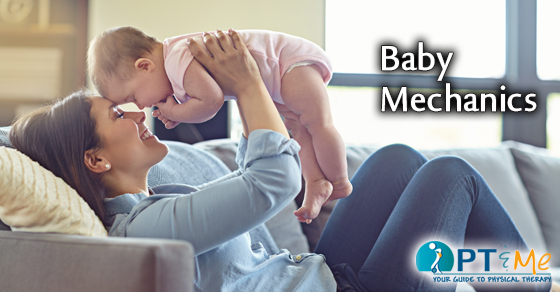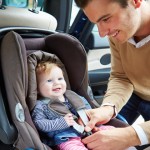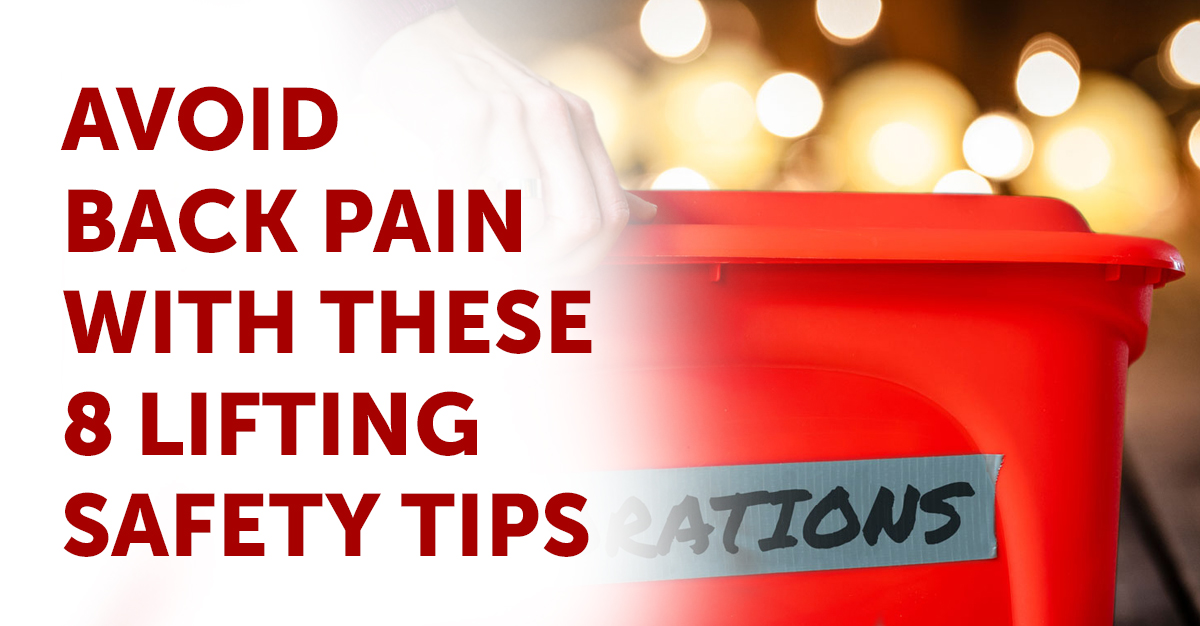
During the holidays, back injuries become more prevalent as people maneuver themselves up and down ladders and stairways while carrying or lifting heavy objects. A little bit of lifting safety can go a long way to keeping your holiday season bright.
1. SIZE UP THE LOAD
Check to ensure the load is stable and balanced.
2. PLAN THE JOB
Consider all possibilities. Is the path clear? What is the weight of the load? How much stress will be placed on your back? Is there traffic, a tripping hazard, a doorway to go through, or a stairway to go up or down? Avoid carrying an object that requires two hands to hold, either up or especially down, a flight of stairs.
3. ESTABLISH A BASE OF SUPPORT
Use a wide, balanced stance with one foot in front of the other. Make sure you have firm footing and your feet are shoulder-width apart. This staggered stance gives you the stability of not falling over and being able to secure the load.
4. BEND YOUR KNEES, KEEP YOUR HEELS OFF OF THE FLOOR AND GET AS CLOSE TO THE OBJECT AS POSSIBLE.
Always lift with your legs and not your back.
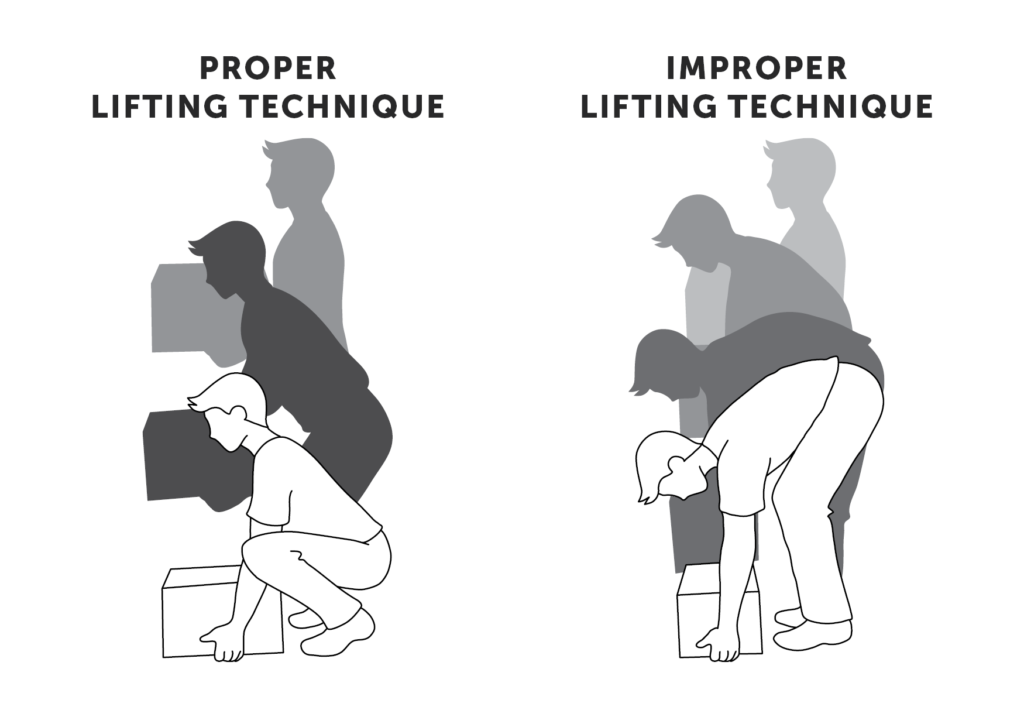
5. BE CERTAIN YOU WILL BE ABLE TO MAINTAIN A HOLD ON THE OBJECT WITHOUT HAVING TO ADJUST YOUR GRIP LATER.
You can use gloves to help maintain an adequate grip, but don’t rely on gloves because they can de-sensitize the fingers making you unable to feel the object.
6. LIFT GRADUALLY
Lift gradually with your legs without using jerky motions.
7. KEEP THE LOAD CLOSE TO PREVENT ARCHING YOUR LOWER BACK.
As you begin the lift, tighten your stomach muscles, and keep your head and shoulders up. The closer the load is to your spine, the less force will be placed on your back.
8. PIVOT
Don’t twist. Move your feet in the direction of the lift. This will eliminate the need to twist at the waist.
Whether at home or at work safe lifting practices can keep your back healthy and safe. Before lifting heavy objects decide how you will lift carry & place the item before you pick it up. If you are experiencing persistent pain, please contact us. We want to help you to be at your best this holiday season.

